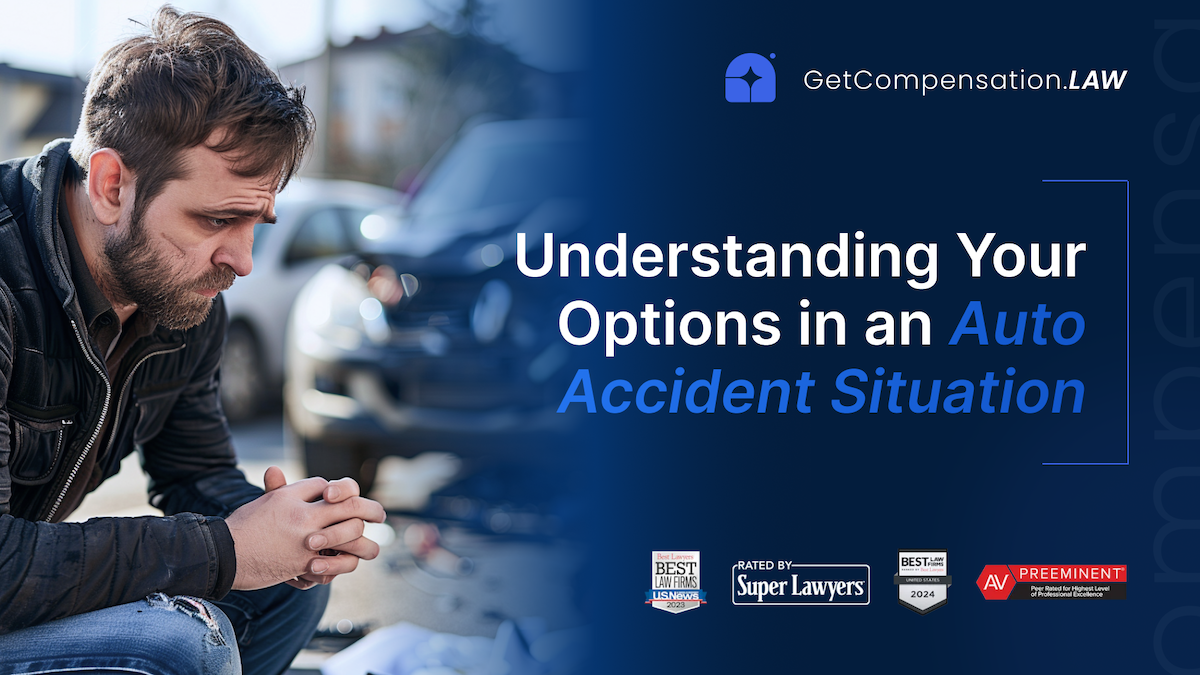
Types of Product Liability Claims: Understanding Design, Manufacturing, and Marketing Defects
Learn about the main types of product liability claims—design, manufacturing, and marketing defects—and how GetCompensation.law connects injured consumers with leading personal injury attorneys for justice and compensation.
Our Network of Attorneys Are Recognized by the Best
Every product you buy, from vehicles and electronics to prescription drugs and children’s toys, is supposed to be safe for its intended use. Unfortunately, thousands of people are injured every year by products that are dangerous due to poor design, errors in manufacturing, or inadequate instructions and warnings. If you or a loved one has suffered because of a defective product, it’s crucial to understand the three primary categories of product liability claims—and how each affects your rights and potential compensation.
This article will walk you through design defects, manufacturing defects, and marketing defects (failure to warn), highlighting real-world examples and outlining how GetCompensation.law connects you to experienced product liability lawyers who can help you pursue justice.
The Three Main Types of Product Liability Claims
1. Design Defects
A design defect exists when a product is inherently unsafe due to its blueprint or concept—even before it’s made or sold. In other words, the product’s design makes it unreasonably dangerous no matter how well it’s manufactured or used as intended.
Examples:
- Automobile rollovers: An SUV with a high center of gravity that tends to tip over during sharp turns.
- Medical devices: A hip implant designed with a metal-on-metal joint that sheds dangerous particles into the body.
- Toys: A toy with small, easily detachable parts that present a choking hazard for young children.
Legal Challenges:
To prove a design defect, plaintiffs often need expert testimony showing there was a safer, economically feasible alternative design that could have prevented injury.
2. Manufacturing Defects
A manufacturing defect occurs when a product is properly designed but something goes wrong during the production process. These are the “lemons”—items that deviate from their intended design due to errors, poor materials, or lack of quality control.
Examples:
- Tainted medication: A batch of drugs contaminated during bottling.
- Defective auto parts: A seatbelt that fails due to a misaligned bolt at the factory.
- Household appliances: A toaster with a faulty wire that causes it to short circuit and start a fire.
Legal Challenges:
Plaintiffs must show that the product was more dangerous than intended because of a specific error in the manufacturing process—and that this defect directly caused the injury.
3. Marketing Defects (Failure to Warn or Inadequate Instructions)
Sometimes, a product’s danger isn’t obvious, and manufacturers have a legal duty to warn consumers or provide proper instructions. When they fail to do so, this is considered a marketing defect.
Examples:
- Pharmaceuticals: A prescription drug that does not disclose all potential side effects or interactions.
- Power tools: Equipment sold without warning about necessary safety gear or proper operation.
- Cleaning chemicals: Products lacking instructions on proper ventilation or the risk of mixing with other substances.
Legal Challenges:
Claimants must prove the manufacturer knew (or should have known) about the risk and failed to adequately warn users, resulting in harm.
Real-World Product Liability Examples
- Takata Airbag Recall: Millions of vehicles were recalled after airbags were found to explode due to a manufacturing defect, causing severe injuries and deaths.
- Roundup Weed Killer: Lawsuits allege that the product’s label failed to warn consumers of cancer risks, leading to numerous marketing defect claims.
- Peloton Treadmill: Design defect claims arose after the treadmill’s structure led to multiple child injuries and at least one fatality.
Who Is Responsible for Product Defects?
Depending on the nature of the defect, liability can rest with:
- The product designer (for design defects)
- The manufacturer (for manufacturing defects)
- The distributor or retailer (for selling defective products)
- All parties in the supply chain

You do not need to be the original purchaser to make a claim—anyone injured by the defective product can potentially seek compensation.
How to Prove a Product Liability Claim
While each case is unique, most successful product liability claims require proof of:
- Injury or loss: You suffered actual harm or financial loss.
- Defect: The product was defective (in design, manufacture, or warnings).
- Causation: The defect directly caused your injury.
- Intended use: You were using the product as intended or in a reasonably foreseeable way.
Attorneys use evidence such as medical records, expert reports, recall information, and accident reconstruction to build a strong case.
Why You Need a Product Liability Lawyer
Manufacturers and their insurers fight hard to avoid liability. An experienced lawyer can:
- Identify and preserve crucial evidence (including the defective product)
- Work with industry experts to demonstrate the defect
- Navigate complex legal theories, including strict liability, negligence, and breach of warranty
- Ensure your claim is filed within your state’s legal deadlines
- Negotiate aggressively for fair compensation or take your case to trial if necessary
GetCompensation.law’s network includes lawyers who have successfully handled design, manufacturing, and marketing defect claims nationwide.
Frequently Asked Questions
Q: Can a product be considered defective even if it meets all industry standards?
A: Yes—meeting standards doesn’t excuse a design or warning defect if there was a safer, reasonable alternative.
Q: What if the product was recalled?
A: Recalls can support your claim, but you may still pursue compensation even if you were injured before a recall was issued.
Q: How long do I have to file a claim?
A: Product liability statutes of limitations vary by state, so contact a lawyer immediately to protect your rights.
How GetCompensation.law Can Help
- Connects you with top product liability attorneys in your area
- Free case reviews and contingency fees—no upfront costs
- Guidance through each step, from investigation to trial if necessary
Conclusion
Product liability law is designed to protect consumers from harm caused by dangerous or defective products—whether the problem lies in design, manufacture, or a failure to warn. Understanding these categories is essential to protecting your rights and pursuing compensation if you’re injured.
GetCompensation.law is your trusted partner, making it easy to connect with proven attorneys who will fight for your recovery and peace of mind.




